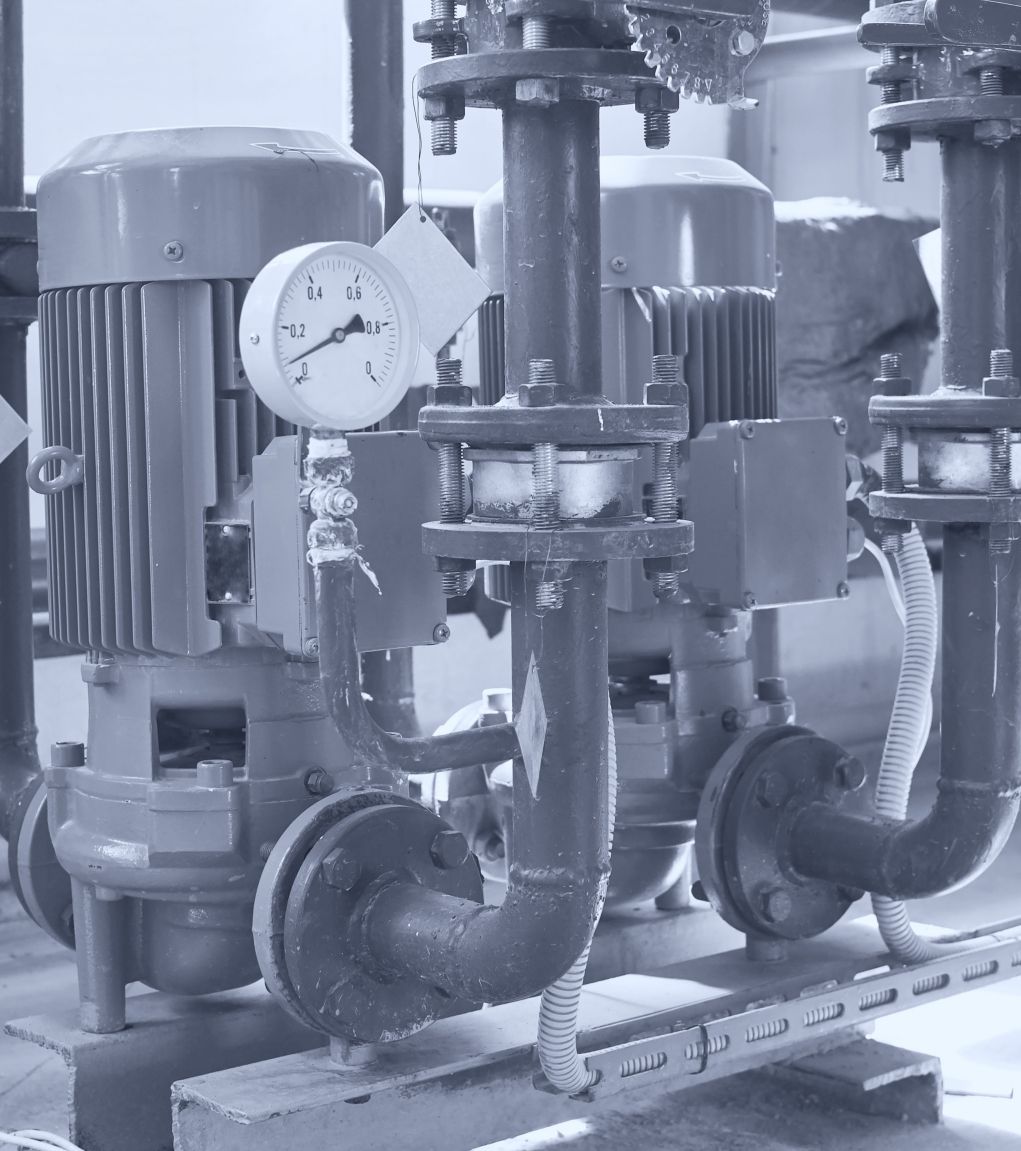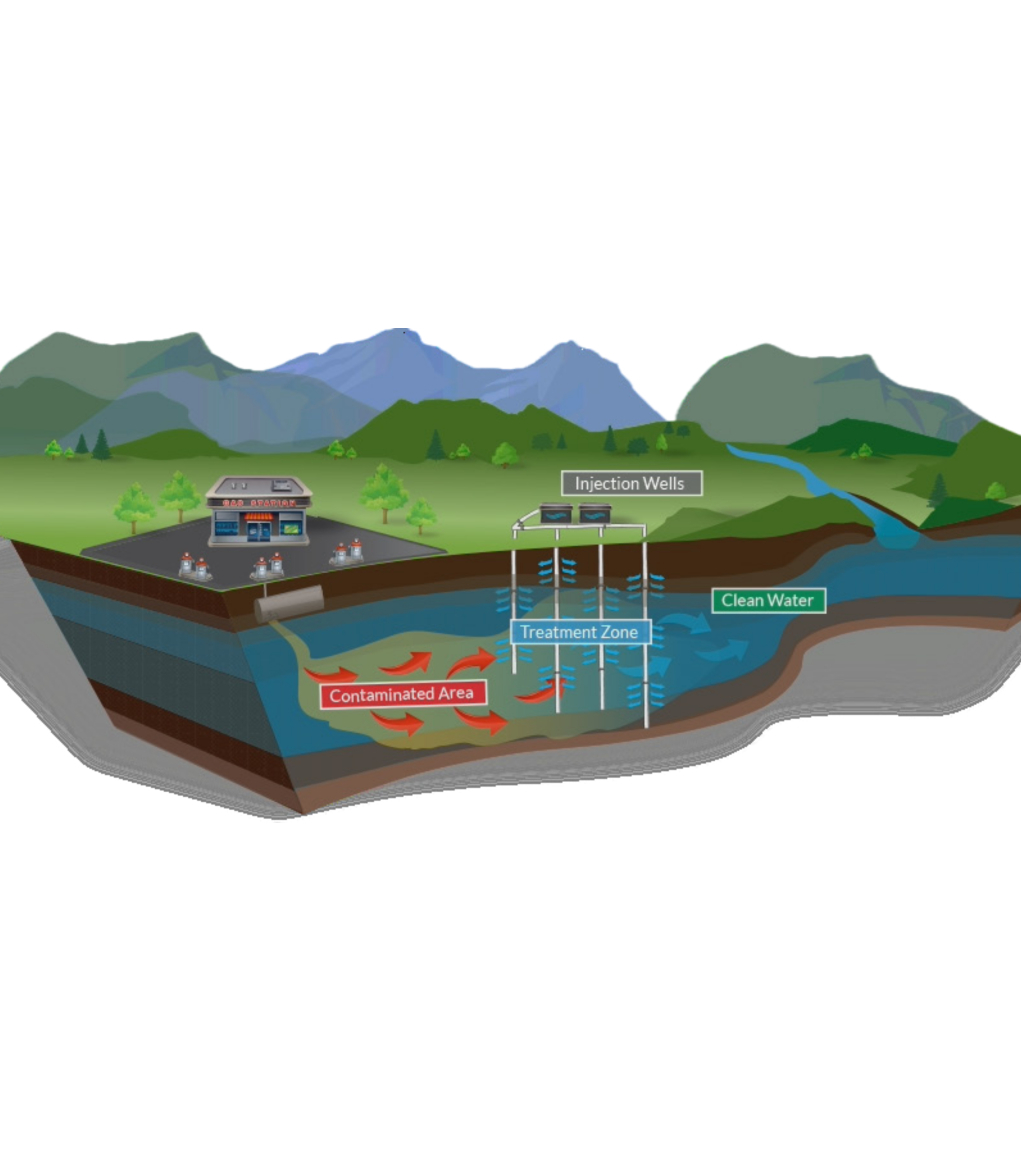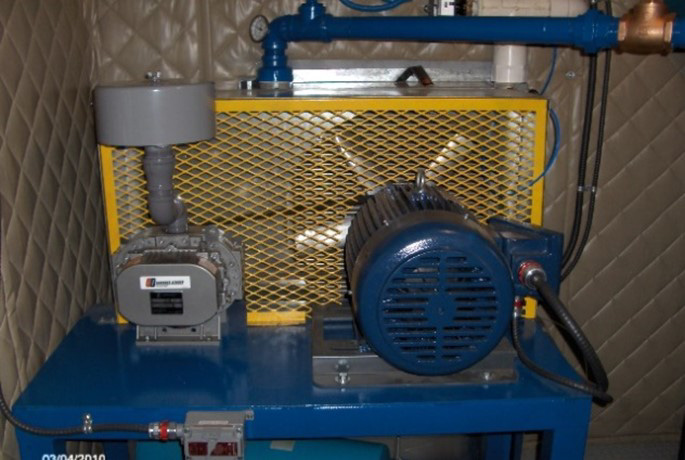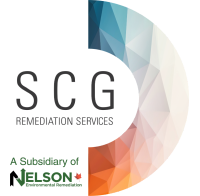Environmental Remediation Through Advanced In-Situ Techniques
At SCG Remediation Services, we specialize in environmental remediation using state-of-the-art in-situ technologies. Our innovative methods address soil and groundwater contamination directly at its source, providing effective solutions without extensive excavation or surface disruption. By employing techniques such as Multi-Phase Vacuum Extraction (MPE), Soil Vapour Extraction (SVE), and Air Sparging, we target and eliminate pollutants like hydrocarbons and volatile organic compounds (VOCs).
Our approach ensures that your site’s remediation needs are met efficiently and sustainably, restoring the environment while minimizing impact on surrounding areas.
Multi-Phase Vacuum Extraction (MPE)
Multi-Phase Vacuum Extraction (MPE or bio-slurping) is a vacuum system that extracts contaminants in both, aqueous and vapour phases from the subsurface using vacuum pumps and liquid air separators. Treatment streams for vapour and aqueous phases are located downstream of the extraction equipment.
The system is installed in a well field using pre-existing well infrastructure or via subsurface piping and is able to recover a variety of contaminants (air and liquid phase) immediately after commissioning. This in-situ extraction technique is adaptable and versatile for use under different site conditions.
Effective media
Soil & Groundwater
Targeted contaminants
Hydrocarbons

Light Non-Aqueous Phase Liquids (LNAPLs)
MPE is most effective with volatile chemicals and low-viscosity LNAPLs. It can be used in almost all types of soils, however, some factors can affect its effectiveness. The technology relies on subsurface airflow to extract volatiles, while mobilizing aqueous and free-phased contamination, according to the way the contaminants
are distributed. MPE is a very effective in-situ technology with a wide range of applications. It has the ability to manipulate groundwater elevation while applying a significant vacuum gradient to further enhance flow through the target horizon.
Soil Vapour Extraction (SVE)
Soil Vapour Extraction (SVE) is an in-situ remediation process that removes volatile contaminants from soils in the vadose or unsaturated zone. SVE consists of a vacuum pump connected to piping infrastructure that is attached to recovery or collection wells which extends the vacuum influence over a contaminated area.
SVE Technologies allows for the recovery of vapor phase contaminants and augments both natural weathering process and the biological degradation of contaminants to remediate contaminated soils.
Effective media
Soil
Targeted contaminants
Volatile Organic Compounds (VOCs)

Effective Removal of Soil Contamination
When assessing SVE applicability at a site, optimal contaminants are generally volatile and easily degraded chemicals such as benzene. Once removed from the subsurface, these contaminants are treated using an oxidizer or vapour phase carbon. SVE is not applicable for contaminants located below the groundwater table, and SVE systems have limited success on contaminants present in the capillary zone. This is due to the nature of vacuum extraction technologies and their tendency to mound the water table during recovery.
SVE can be used in a variety of soil types, with more porous and permeable soils being more effective to treat due to increased airflow through these layers. Additional processes such as air sparging or thermal enhancements can also increase contaminant recovery.
Soil Vapour Extraction (SVE) remains a cost-effective solution for in-situ treatment if contaminants of concern are, volatile/semi-volatile, and are located in the vadose zone.

Air Sparging
Air sparging involves injecting air into contaminated groundwater to drive Volatile Organic Compounds (VOCs) into the vadose zone through a process known as volatilization. In addition to this process, air sparging also increases bio-augmentation within the impacted areas enhancing bacterial cultures and increasing the rate of degradation of a contaminant. SVE is conducted in unison with air sparging to remove VOCs from the subsurface.
Thermal enhancement has also proven an effective method for increasing the mobilization of certain contaminants. SCG has successfully utilized heat from post-treatment exhaust streams to be re-injected back into the subsurface. This process has shown to be an effective means to increase mass recovery and decrease project timelines.
